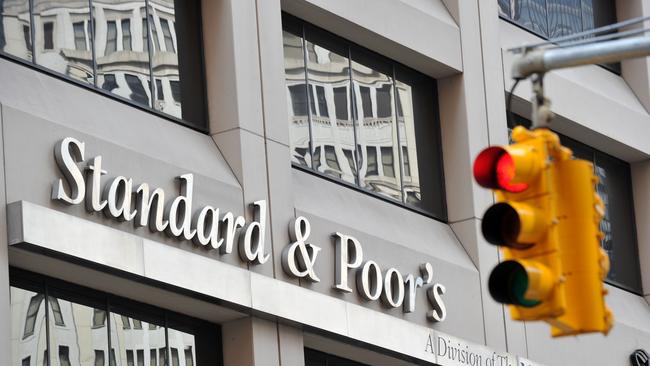Global inflation fears are ‘overblown’, S&P Global Ratings says
Australia’s budget position could comfortably digest a shock 3 percentage point surge in borrowing costs, S&P Global Ratings says.

Australia’s budget position could comfortably digest a shock three- percentage-point surge in borrowing costs and global inflation fears are “overblown”, an S&P Global Ratings report says.
The new analysis comes as world financial markets begin to factor in a higher probability that the trillions of dollars in fiscal support aimed at fighting the pandemic globally will supercharge economic growth and force central banks to tighten policy more quickly to offset a sharp increase in consumer prices.
S&P’s report offered a robust rebuttal: “Global inflation fears are overblown, and … orderly reflation is a positive development for the world economy.”
According to May’s federal budget, gross commonwealth debt would climb from $829 billion at the end of this financial year to almost $1.2 trillion by the middle of the decade, stabilising from this point on at 51 per cent of GDP.
This would be more than double the $540 million in debt as at mid-2019.
The ratings agency said in its baseline estimate, the interest expense on Australia’s commonwealth debt pile would be steady at 1.3 per cent of GDP out to 2023.
Assuming a one-percentage-point increase to estimated borrowing rates would have no impact on this ratio, S&P found, while a three-percentage-point shock would take interest expense to only 1.4 per cent of GDP for this and the next two years.
Similarly, the median interest expenditure for developed economies under the three-percentage-point rate shock scenario was 1.8 per cent of GDP – again, not enough to seriously undermine budget positions.
S&P said there were two reasons for “low sensitivity” to higher rates in the developed world.
First, “the low starting point on refinancing rates”, with charges on new federal borrowing or refinancing averaging 1.8 per cent so far this year.
Second, developed countries on average are refinancing debt equivalent to only 10.5 per cent of GDP per annum over the next three years.
Australia is one of only 11 countries rated AAA by S&P, alongside the likes of Canada, Germany, Switzerland, Denmark and New Zealand.
But S&P warned that “what ultimately matters for sovereigns and their ratings is why rates rise”.
“If they do so reflecting recovering growth and normalising monetary policy, amid accelerating productivity, they will represent little threat to public finances.
“On the other hand, if rate hikes are aimed at choking off runaway inflation against a backdrop of stagnating productivity, the fiscal and ratings fallout could be substantial.”
This second, worst-case combination of climbing inflation and slowing growth – known as stagflation – could have potentially dire consequences on governments’ financial positions, S&P said.
“Against a backdrop of weaker GDP performance, pulled lower by stagnating productivity, consolidating very large government deficits would be extremely challenging for sovereigns and our ratings, from both an economic and a political perspective.”
According to May’s federal budget, gross Commonwealth debt will climb from $829 billion at the end of this financial year, to almost $1.2 trillion by the middle of the decade, stabilising from this point on at 51 per cent of GDP.
This will be more than double the $540 million debt pile in the middle of 2019, or 28 per cent of national output.
Thanks to the sharp drop in global interest rates last year, Treasury has estimated that debt servicing costs as a percentage of national output would remain steady at about 1 per cent out to the end of the decade – only slightly higher than before Covid despite more than twice the debt burden.
In a recent speech, Treasury secretary Steven Kennedy said Australia’s “relatively positive debt dynamics reflect the fact that nominal economic growth is expected to exceed the government’s cost of borrowing for at least the next decade”.




To join the conversation, please log in. Don't have an account? Register
Join the conversation, you are commenting as Logout